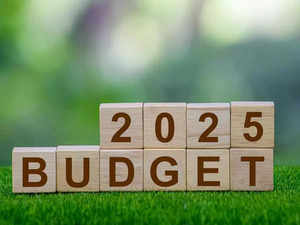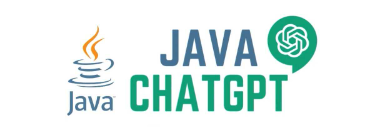 Agencies
AgenciesThe government should target a capital spending of Rs 11 lakh crore in the Budget for the next fiscal while giving inflation-adjusted relief on personal income tax to boost consumer spending, rating agency ICRA said on Wednesday. ICRA Chief Economist Aditi Nayar said last year's record budgeted capital expenditure of Rs 11.11 lakh crore is likely to fall short by about Rs 1.4 lakh crore and the next year's target should be fixed at the last year's level with a focus on keeping borrowing within reasonable limits.
Further, Nayar said capex numbers are trailing the run rate required to get to the Budget target in the current fiscal.
Between April and November 2024, capex spending stood at Rs 5.13 lakh crore, 46 per cent of the Budget estimates of Rs 11.11 lakh crore.
"We are looking at a large shortfall in the current fiscal. For next year, we are hoping that we will get fiscal space to prioritise capex... For FY26, based on the revenue numbers...a fiscal deficit of 4.5 per cent of GDP will be quite reasonably achieved. That would allow us Rs 11 trillion of capex, a growth of 11-12 per cent over the number that we think is feasible for FY25," Nayar told PTI in an interview.
She said putting in a larger capex number may not be "prudent" as a larger borrowing and fiscal deficit would push up yields.
She said the Budget for 2025-26 should put a "realistic capex number" upfront and if, during the course of the year, it looks like it will be over-achieved, then the government could take the supplementary demands for grants route to up the target.
To shield the economy from the impact of Covid, the government has been spending heavily on infrastructure and building capital assets. It earmarked Rs 4.39 lakh crore capex in 2020-21, which increased to Rs 5.54 lakh crore in 2021-22. In 2022-23, capex spending was hiked to Rs 7.5 lakh crore and in 2023-24, it reached Rs 10 lakh crore.
On being asked if the government would continue with the investment push in FY26 as well, Nayar said the capex push creates positivity in the economy and a virtuous cycle that trickles down to other parts of the economy as well.
"I would think that capex would be low in FY25 and the fiscal space available should be prioritised for capex. Our forecast suggests that every 10 basis points of additional fiscal deficit would get us another Rs 35,000 crore of capital expenditure. Probably better to start with a realistic capex number, a fiscal deficit that would come down in line with medium-term forecast that will give a reasonable borrowing figure for markets to absorb," Nayar said.
ICRA forecasts a fiscal deficit, which is the difference between government expenditure and revenues, at 4.8 per cent of GDP in the current fiscal and 4.5 per cent in FY26.
Nayar also said that GDP growth has bottomed out in the September quarter and going forward, it is expected to recover. The ratings agency projects GDP growth of 6.5 per cent for both the current and next fiscal years.
She said rural consumption is expected to be steady, while urban consumption would be uneven. Once food inflation starts to recede, urban consumption may begin to see a bit of an uptick, she said.
On her expectations from the Budget, Nayar said some tinkering with income tax slabs and rates would give a "mood upliftment" for urban taxpayers. That is what the budget can bring in without too much revenue loss.
"Inflation does eat away disposable income. It is not an unfair ask (tax relief). While some modest concessions could be given in terms of tax relief, we need to make sure that we are not losing out too many people from the I-T net," she said, adding that two things will be important -- one, not to have too much revenue loss, and second, not to lose too many taxpayers from the tax net.
"Perhaps either a tinkering with the rates at the lower slab or sort of inflation adjustment of the slabs to give a little bit of relief right in the beginning. We can look at income tax filers continuing to file tax, while we are bringing in a slightly higher slab for the initial I-T bracket," Nayar said.
Currently, individual taxpayers can file their income tax returns (ITR) either under the old tax regime which offers benefit of deductions and exemptions, or under the new tax regime which offers a lower rate of taxes.
The 2024-25 Budget had hiked the standard deduction for salaried taxpayers to Rs 75,000, and the deduction on family pension for pensioners to Rs 25,000 under the new tax regime.
The new tax regime exempts income up to Rs 3 lakh. Those earning annually between Rs 3-7 lakh pay 5 per cent tax, Rs 7-10 lakh (10 per cent), Rs 10-12 lakh (15 per cent), Rs 12-15 lakh (20 per cent) and above Rs 15 lakh (30 per cent).
The old tax regime, however, exempts income up to Rs 2.5 lakh from taxes. Income from Rs 2.5-5 lakh attracts 5 per cent tax, and 20 per cent for income between Rs 5 lakh and Rs 10 lakh. A 30 per cent tax is levied on income above Rs 10 lakh.
Budget with ET
Between April and November 2024, capex spending stood at Rs 5.13 lakh crore, 46 per cent of the Budget estimates of Rs 11.11 lakh crore.
"We are looking at a large shortfall in the current fiscal. For next year, we are hoping that we will get fiscal space to prioritise capex... For FY26, based on the revenue numbers...a fiscal deficit of 4.5 per cent of GDP will be quite reasonably achieved. That would allow us Rs 11 trillion of capex, a growth of 11-12 per cent over the number that we think is feasible for FY25," Nayar told PTI in an interview.
She said putting in a larger capex number may not be "prudent" as a larger borrowing and fiscal deficit would push up yields.
You Might Also Like:
She said the Budget for 2025-26 should put a "realistic capex number" upfront and if, during the course of the year, it looks like it will be over-achieved, then the government could take the supplementary demands for grants route to up the target.
To shield the economy from the impact of Covid, the government has been spending heavily on infrastructure and building capital assets. It earmarked Rs 4.39 lakh crore capex in 2020-21, which increased to Rs 5.54 lakh crore in 2021-22. In 2022-23, capex spending was hiked to Rs 7.5 lakh crore and in 2023-24, it reached Rs 10 lakh crore.
On being asked if the government would continue with the investment push in FY26 as well, Nayar said the capex push creates positivity in the economy and a virtuous cycle that trickles down to other parts of the economy as well.
"I would think that capex would be low in FY25 and the fiscal space available should be prioritised for capex. Our forecast suggests that every 10 basis points of additional fiscal deficit would get us another Rs 35,000 crore of capital expenditure. Probably better to start with a realistic capex number, a fiscal deficit that would come down in line with medium-term forecast that will give a reasonable borrowing figure for markets to absorb," Nayar said.
You Might Also Like:
ICRA forecasts a fiscal deficit, which is the difference between government expenditure and revenues, at 4.8 per cent of GDP in the current fiscal and 4.5 per cent in FY26.
Nayar also said that GDP growth has bottomed out in the September quarter and going forward, it is expected to recover. The ratings agency projects GDP growth of 6.5 per cent for both the current and next fiscal years.
She said rural consumption is expected to be steady, while urban consumption would be uneven. Once food inflation starts to recede, urban consumption may begin to see a bit of an uptick, she said.
On her expectations from the Budget, Nayar said some tinkering with income tax slabs and rates would give a "mood upliftment" for urban taxpayers. That is what the budget can bring in without too much revenue loss.
"Inflation does eat away disposable income. It is not an unfair ask (tax relief). While some modest concessions could be given in terms of tax relief, we need to make sure that we are not losing out too many people from the I-T net," she said, adding that two things will be important -- one, not to have too much revenue loss, and second, not to lose too many taxpayers from the tax net.
"Perhaps either a tinkering with the rates at the lower slab or sort of inflation adjustment of the slabs to give a little bit of relief right in the beginning. We can look at income tax filers continuing to file tax, while we are bringing in a slightly higher slab for the initial I-T bracket," Nayar said.
Currently, individual taxpayers can file their income tax returns (ITR) either under the old tax regime which offers benefit of deductions and exemptions, or under the new tax regime which offers a lower rate of taxes.
The 2024-25 Budget had hiked the standard deduction for salaried taxpayers to Rs 75,000, and the deduction on family pension for pensioners to Rs 25,000 under the new tax regime.
The new tax regime exempts income up to Rs 3 lakh. Those earning annually between Rs 3-7 lakh pay 5 per cent tax, Rs 7-10 lakh (10 per cent), Rs 10-12 lakh (15 per cent), Rs 12-15 lakh (20 per cent) and above Rs 15 lakh (30 per cent).
The old tax regime, however, exempts income up to Rs 2.5 lakh from taxes. Income from Rs 2.5-5 lakh attracts 5 per cent tax, and 20 per cent for income between Rs 5 lakh and Rs 10 lakh. A 30 per cent tax is levied on income above Rs 10 lakh.
(Catch all the Business News, Breaking News, Budget 2024 Events and Latest News Updates on The Economic Times.)
Subscribe to The Economic Times Prime and read the ET ePaper online.
Read More News on
(Catch all the Business News, Breaking News, Budget 2024 Events and Latest News Updates on The Economic Times.)
Subscribe to The Economic Times Prime and read the ET ePaper online.








































